On the night of Holy Thursday, one would find the Basilica full of silent or whispering worshippers awaiting one of the most bizarre, yet stunningly beautiful, liturgical celebrations of the year—Tenebrae. Although Tenebrae itself has not been a formal part of the liturgical calendar since the reforms after Vatican II, the service in the Basilica bears many similarities to the ancient rite. What exactly is Tenebrae, and what is it about the service that seems to transcend the post-Conciliar reforms?
Tenebrae takes its name from the Latin word for “darkness,” which comes from the second Responsory for Tenebrae on Good Friday: “There was darkness when the Judeans crucified Jesus.” Tenebrae, in the old rubrics, consisted of Matins (early morning prayers) and Lauds (mid-morning prayers) during the Triduum. Matins consisted of three Nocturnes, each with three Psalms and three Lessons, brief readings from the Scriptures. Lauds consisted of five Psalms and a New Testament Canticle. During Tenebrae, fifteen candles were placed on a triangular stand known as a hearse, and one candle would be extinguished after every Psalm.
Tenebrae has its origins in the Divine Office, the regular eight times per day (now five times per day) cycle of the recitation of the Psalms, which clergy, especially in cathedrals or basilicas, recite or sing daily. Matins, usually said in the middle of the night, and Lauds, normally said around dawn, are the first of these canonical hours. The Liturgy of the Hours in its original eight-office form could be found in the sixth-century Rule of Saint Benedict, where all 150 Psalms were laid out such that monks praying every canonical hour would sing the entire Psalter every week.
In the Medieval period, the Matins and Lauds for the Triduum became distinguished from ordinary Matins and Lauds as they were celebrated throughout the year. Tenebrae was moved to the evening before, around the time of Vespers (evening prayer), rather than beginning around midnight as Matins normally did. This also followed the practice of celebrating the liturgies of the Holy Triduum in the morning of each day, making morning celebration of Tenebrae impossible. Pope Benedict suggests that this symbolized the “setting of the Sun of Justice and the darkness of the Jewish people who knew not our Lord and condemned Him to the gibbet of the cross.” Additionally, after the extinguishing of each candle, at the end of Lauds, the fifteenth candle, still lit, is hidden, plunging the entire Church into darkness. At this point, the clergy and congregation begin the strepitus, or violent noise. This could take the form of violently closing books (think dorm-Mass style), striking pews or choir stalls (as we do in the Basilica), or stomping on the floor. While scholars agree that this likely had its origin in calling the clergy back to the sacristy, it has become symbolic of the earthquake at the time of Jesus’ death. After the strepitus, the lit candle is brought back into the body of the church, publicly extinguished, and everyone leaves in silence.
The service remained generally untouched until 1955, when Pope Pius XII amended the Holy Week services. The times for the celebration of Mass or Eucharist during the Triduum became what it is now (evening on Holy Thursday, afternoon on Good Friday, and night on Holy Saturday), thus allowing for Matins and Lauds to be restored to their usual time, in the morning. The Tenebrae service was also shortened, breaking the traditional fourteen-Psalm structure. These changes remained until Tenebrae was standardized, done more or less like the Liturgy of the Hours any other given week, in the reforms which took place after the Council.
The service as it exists at Notre Dame is different in a number of ways. First, it is at night (11pm), as it was before the reforms of 1955. Second, it is shortened even more than the 1955 reforms – it consists of three psalms, three Lessons from the Lamentations of Jeremiah, a hymn in the middle of the service, and the conclusion of Night Prayer as it is heard at Moreau Lucernarium. The Basilica continues the traditions of the hearse (using a round metal stand), the single lit candle, and the strepitus at the conclusion of the service. The Basilica’s abridged reconstruction of Tenebrae is a beautiful way to commemorate Holy Week, and we at the Zossima Project urge anyone on campus to make an effort to attend. If you are early (since the church fills quickly) and in a spirit of prayer, it can be one of the most transformative liturgies on campus.
This article was brought to you by the Theology Club’s Zossima Project: Making prayer an education. For a complete works cited, please email zossimaprojectnd@gmail.com. Thank you for your readership.
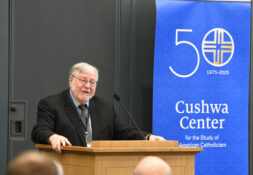
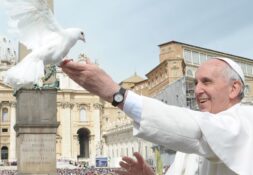
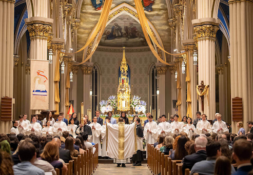
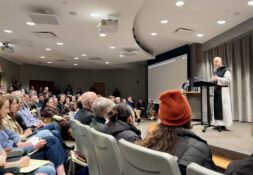
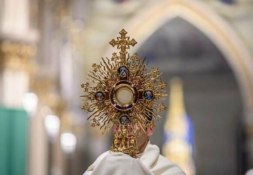

Leave a Reply